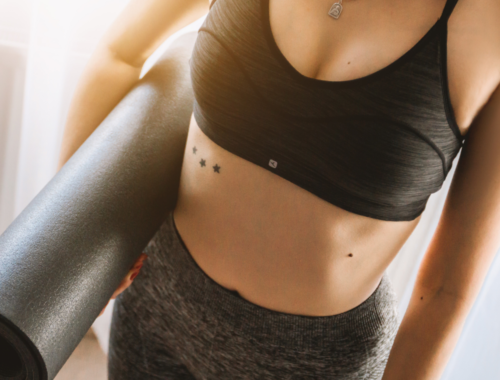
THE ULTIMATE WAY TO BURN CALORIES WITH CARDIO
Contents
Are you getting to the gym regularly but still not losing weight? Here’s the way to use insights from new weight-loss research to assist you peel off the pounds fast and efficiently.
It’s an old chestnut of the fitness industry, the notion that for each 3,500 calories you burn you’ll lose a pound of fat. As a private trainer, though, I often see guys slogging through week after week of running, walking, lifting, whatever — workouts designed specifically to succeed in that 3,500-calorie-per-week mark — only to weigh precisely the same when it’s over. What gives?
The problem thereupon old weight-loss formula, researchers now say, is that it doesn’t take under consideration what goes on when you’re not exercising: the calories you’d have burned anyway, the calories you’ll add from overeating after overtraining, and therefore the ones you won’t burn subsequent day because you’re too sore to maneuver . The old weight-loss math assumed that your body was sort of a block of marble which by systematically chiseling away at it with exercise you’ll gradually get obviate the undesirable stuff and find yourself with Michelangelo abs. But your body’s not a block of marble; it’s during a constant tug-of-war between consuming and burning calories, whether you’re eating, sleeping, reading, or watching TV. therefore the calculus for getting obviate that pound is way more complex than simply subtracting the “calories burned” number from your weekly goal at the top of every workout. “The 3,500-calorie figure is theoretically correct,” says Ralph La Forge, the director of Duke University Medical Center’s Lipid and Disease Management Preceptorship Program. That is, if you burn that fat during a closed container under laboratory conditions.
La Forge’s work points to variety of reasons why you’ll sweat your ass off on a day to day and yet still find yourself with an equivalent size ass. and that they all return to a failure to know the way the body really burns calories. For starters, you’ll overestimate the amount of calories your workout effectively expends. For the typical 180-pound guy, walking slowly for an hour uses approximately 200 calories. Trouble is, you can’t just take that 200 and subtract it from your 3,500-calorie goal. you furthermore may need to consider the calories you’d have skilled during that hour albeit you were sitting on the couch. A 180-pound guy burns around 90 calories per hour just by being awake, so during your one-hour walk you’ll have burned just 110 more calories than if you weren’t exercising in the least . That number — what La Forge calls the “net energy cost” — is that the important one. It’s what percentage extra calories you’ve actually used.
You may even be building muscle while you lose fat, particularly if you’ve started a replacement program or if you’re lifting weights. this is often a pleasant problem to have; the more muscle you add the more readily your body will burn calories. But if you aren’t keeping track of your body-fat percentage, the shortage of results on the size are often a demoralizing kick within the gut at the top of a rigorous week of coaching .
You might even be sabotaging your weight loss goals by training too hard. Burning 700 calories on a tough bike ride is sweet , but if you’re so dead afterward that you simply spend the remainder of the day on the couch, you’ve got to think about the calories that you simply won’t use because you’re too tired to steer the dog. Plus, overtraining can cause an increased appetite. If you’re so hungry after your bike ride that you simply eat an additional cheeseburger (310 calories), internet calorie burn for your workout drops from 700 to 390.
The bottom line: You’ve need to exercise quite you thought. But the simplest thanks to make certain your workout leads to weight loss is different for each sport. That’s why we’ve analyzed four of the foremost popular activities — running, swimming, cycling, and weight training — to assist you shed pounds the proper way.

Your Sport-Specific Plan
A number of things determine what proportion weight you lose from exercise. Make those variables work for you.
BURN CALORIES WITH RUNNING
A five-mile run at 5 mph burns about 600 net calories. At 8 mph (a 7.5-minute-mile pace), your net rises only modestly to 670. Still, attempt to devour the pace. You’ll burn more calories in about two-thirds the time.
Running outside or on an inside track uses approximately 5 percent more calories than running on a treadmill. And be warned: Those “calories burned” readouts tend to overestimate by 10-15 percent.
If you’re a replacement runner or if you’ve recently added hills to your routine, you’ll be adding muscle while you’re melting fat, which may offset any loss come weigh-in time. Don’t worry: You’ll soon shed pounds.
Run outdoors whenever possible. Don’t avoid hills; attack them. And go faster. At 8 mph you’ll burn more calories in less time.
BURN CALORIES WITH SWIMMING
The caloric difference between moderate and intense swimming isn’t great, but an extended , slow swim tends to extend your appetite quite a brief , intense one, making you more likely to exchange calories by overeating.
Open-water swimming is way tougher than pool swimming, during which you get to show around after every lap and provides yourself an enormous push-off. Not so during a lake or within the ocean.
Once your swimming is robust , take it up a notch by switching to a tougher stroke, just like the butterfly. You’ll burn almost 100 more calories an hour than once you were doing the breaststroke.
Swim at an intensity above 60 percent of your max pulse . Use tougher strokes, just like the butterfly.
BURN CALORIES WITH CYCLING
Fifteen miles at 11 mph burns around 590 net calories. At 17 mph that jumps to around 840. Of course, not everyone can sustain a high speed for 15 miles, so get a speedometer and workout slowly.
Cycling within the world can spend to 90 more calories per hour, but a stationary bike is safer than riding in rain or snow and delivers less impact to the joints. Tip: At the gym, stay up straight as you ride.
Because biking may be a non-weight-bearing exercise, it are often easy to overdo it; remember, if you fry your legs and find yourself couchbound, you’ll miss out on everyday caloric burn from, say, raking leaves.
Ride faster outdoors, but stay safe and use the stationary bike on rainy or snowy days. The day after a tough ride, take a simple spin.
BURN CALORIES WITH WEIGHT TRAINING
Intense lifting — sets of 6-8 reps with heavy weight — adds size (and weight). You, on the opposite hand, want to try to to sets of 10-15 reps with moderate weight; you’ll burn calories and build muscle by going longer.
Weight machines are great for isolating muscles and helping beginners learn proper technique, but lifting with free weights allows you to incorporate more muscle groups and expend more calories.
For a 180-pound guy, an hour of moderate lifting burns a modest 350 approximately calories. That said, lifting is nearly mandatory if you would like to reduce . Adding lean muscle increases caloric burn throughout the day.
Use free weights, not machines. Lift moderate weight in sets of 10-15 reps. Emphasize big muscle groups, like those within the legs.

THE SLEEP CYCLE, KEY TO MUSCLE GROWTH
También te puede interesar

THE SLEEP CYCLE, KEY TO MUSCLE GROWTH
diciembre 14, 2020
WHAT YOU NEED FOR COMPETING IN BIKINI FITNESS
febrero 18, 2024
